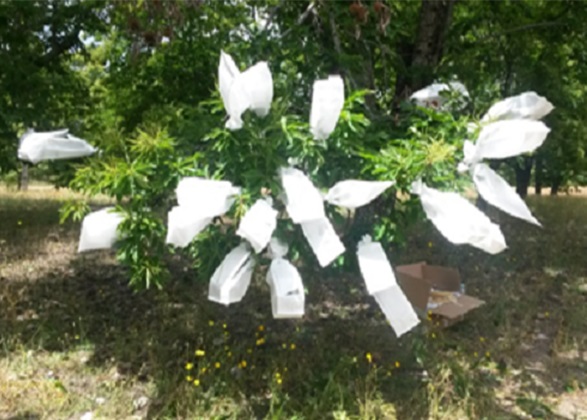Diseases caused by exotic pathogens are a global problem due to mobility and intercontinental trade. A better understanding of the genetic basis and molecular mechanisms of plant: pathogen interactions are therefore fundamental and critical for the development of management strategies that minimize economic and ecological losses related to established diseases, as well as those related to new emerging diseases.
In 2006, INIAV initiated a breeding program for resistance to P. cinnamomi, based on controlled crosses, between the European species, Castanea sativa, which is very sensitive and the resistant Asian species, Castanea crenata (Japanese chestnut) and Castanea mollissima (Chinese chestnut). The goal is the introgression of resistance genes from Asian species (C. mollissima and C. crenata) to C. sativa (Costa et al., 2011). This program has an applied approach, which aims to select and multiply a new generation of chestnut rootstocks, with improved resistance to ink disease, with pedigree and molecular characterized aiming to boost the productive sector at national and international levels, which presents a deficit of improved plant material for plantation. The new clones are disseminated through this project: NEW Cast Rootstocks,
In a more fundamental research approach, the goal is to unveil and understand the molecular and genetic mechanisms of resistance to P. cinnamomi, that Asian species possess, as a result of a co-evolution with the pathogen, to identify molecular markers for molecular assisted selection, for an early and expedite selection of improved genotype from the breeding program.

Controlled crosses




